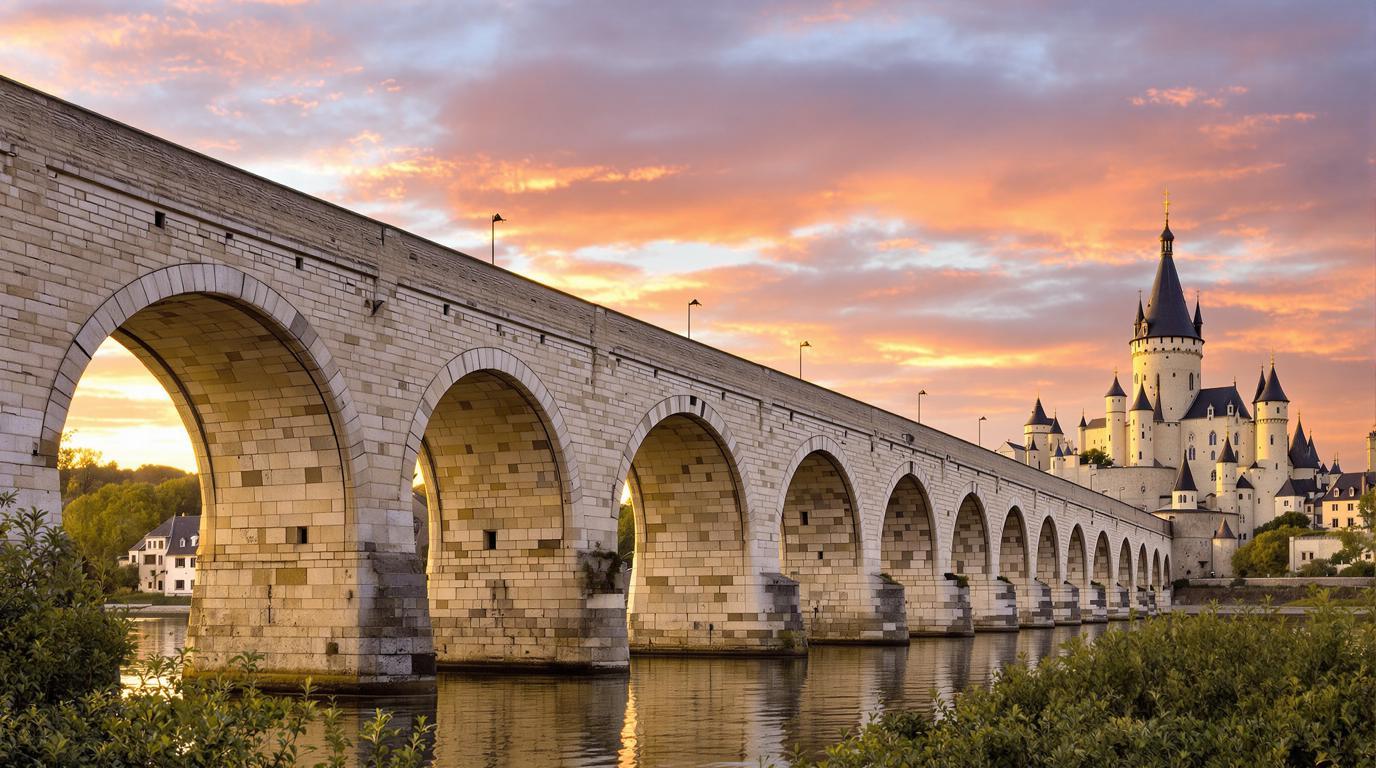Hidden in France’s Loire Valley, Beaugency might not make headlines like Paris or Nice, but this medieval gem offers something increasingly rare in European travel—authentic charm without overwhelming crowds. With stone-paved streets and a skyline punctuated by towers from the Middle Ages, this riverside town has quietly preserved its historical essence while embracing modern travelers seeking something beyond the typical French itinerary.
The bridge that witnessed Joan of Arc’s triumph
Beaugency’s 12th-century stone bridge stretches across the Loire River with 23 arches, each built in a slightly different style. This architectural peculiarity isn’t just aesthetically pleasing—it represents the evolving construction techniques of medieval builders. In 1429, Joan of Arc crossed this very bridge after liberating the town from English control, forever linking Beaugency to France’s most celebrated heroine.
“The bridge isn’t just a crossing—it’s a history book written in stone, telling stories of conquests, commerce, and courage across nine centuries,” explains local historian Marie Dupont.
A castle that doubles as a time machine
The Château de Beaugency, with its imposing Tour César (Caesar’s Tower), stands as one of France’s oldest examples of Romanesque military architecture. Unlike many French castles that feel like museum pieces, Beaugency’s château pulses with life during “Les Lueurs de Beaugency”—night tours where torchlight and dramatic projections transform stone walls into canvases of medieval storytelling.
For travelers seeking similar medieval magic in Provence, several golden-stone villages offer equally enchanting experiences, though Beaugency’s riverside setting gives it a distinctive atmosphere.
Where each building tells a different century’s story
Walking Beaugency’s narrow streets reveals an architectural timeline: the 11th-century Romanesque abbey church stands near Renaissance townhouses, while medieval timber frames neighbor 18th-century elegance. The town hall showcases remarkable embroidered wall hangings that depict local legends with surprising detail.
Like certain preservation-focused communities in Pennsylvania, Beaugency demonstrates how small towns often safeguard cultural heritage more effectively than bustling cities.
The labyrinth that delights families year-round
The Labyrinthe de Beaugency offers a uniquely French take on family entertainment. This elaborate maze incorporates local historical themes and provides a welcome diversion for children while parents sample regional wines. It’s thoughtfully designed to engage visitors of all ages, making Beaugency surprisingly family-friendly for a medieval destination.
Riverside dining that elevates local ingredients
Beaugency’s restaurants, including standouts like Le P’tit Bateau and César et Firmin, highlight Loire Valley specialties with river views. Local chefs work directly with nearby producers, creating seasonal menus that showcase the region’s agricultural bounty.
“What makes our cuisine special isn’t complicated techniques—it’s simply respecting what grows within sight of our town,” notes Chef Laurent Benoit of César et Firmin.
A stargazing experience worth noting
The Loire Valley’s relatively low light pollution makes Beaugency excellent for astronomy enthusiasts. While not yet as renowned as certain Nevada locations developing as stargazing destinations, the riverbank offers spectacular night sky viewing, especially during summer meteor showers.
Where wellness meets historical immersion
Unlike dedicated wellness destinations that attract millions annually, Beaugency offers a different kind of rejuvenation—the profound calm that comes from disconnecting among centuries-old stones. Morning walks along the Loire, afternoons exploring medieval alleys, and evenings sampling local wines create a natural rhythm that visitors find unexpectedly restorative.
The unexpected wildlife encounter
Beaugency’s riverfront location makes it a surprising hotspot for birdwatching. While not offering penguin sightings like certain Tasmanian coastal towns, the Loire’s ecosystem supports herons, kingfishers, and migratory birds that add natural wonder to the historical experience.
Beaugency doesn’t shout for attention like France’s famous destinations, yet those who discover this riverside medieval treasure often find themselves planning return visits before they’ve even departed. In a country overflowing with celebrated sites, Beaugency reminds us that sometimes the most meaningful travel experiences happen in places where history whispers rather than announces itself—and where modern life continues within ancient walls with an authenticity that can’t be manufactured.
